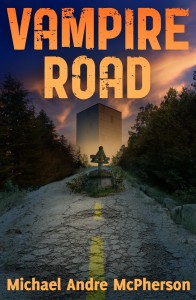Will Publishing Streams Reverse?
There’s a shift going on in publishing that publishers and agents should be discussing over their lattes in the boardrooms of Manhattan. I have a friend who is a well-published, successful author, but his publisher is putting the screws to him on a new contract, refusing to budge from a very miserly e-book royalty that they’ve decided is “industry standard” in a fledgling e-book industry. This ridiculous “industry standard” mantra has so upset this author that he is considering walking away and self-publishing his next novel.
I can’t name this author because the contract negotiations are on-going, but I can say that he has a big enough name that he wouldn’t have to worry about being lost in what Joe Konrath aptly named The Tsunami of Crap that is flooding e-book stores like Smashwords and Kindle. My friend already has an established audience that will seek him out and buy his novels.
So if the publisher calls his bluff and he indie-pubs, who will they publish in his place? Who will accept a horrible contract to make a name? A newbie like me, of course.
Right now we newbies put up our e-books on Amazon, desperately market them and hope to make enough sales to get the attention of the publishing or film industry and make the big sale. Even Amanda Hocking, who could probably live on her e-book sales for the rest of her life, signed with St Martins.
But if the publishing industry continues to empty their stables of successful authors and runs instead with untested talent, it will come with an unintended consequence: self-publishing becomes more respectable.
For over a century publishers have maintained that only they know good work and that self-published novels must be crap. They’ve been right often enough that this mantra has played well with the public. But if publishers drive away their authors then a lot of high quality indie-pubbed novels will hit the market. Worse for publishers, it means the public will not be so afraid to take a fly on a indie-pubbed e-book. Note that it won’t be self-publishing anymore, it will be indie-publishing. Even J.K. Rowlings has placed a toe in that water.
So the streams would reverse: newbies would be with the publishers. Established authors would indie-publish.
Of course it’s going to be a lot messier than that. Newbies will still indie-pub first, get a small following and then take the lousy industry contract. After their first bestseller, they’ll say goodbye to their publisher and go back to indie-publishing so that they can get the 70% royalty.
Watch out now for publishers trying to force authors into ten-book contracts to lock in long-term, cheap content providers. This will hurt publishing in the long run, because sometimes acquisition editors make mistakes, and so a publisher could find themselves forced to publish one poor selling novel after another when an author doesn’t perform as expected.
In my humble opinion, publishers should just offer a better e-book royalty and keep their talented authors. My friend deserves it. Otherwise publishers may discover that they’ve made things worse for themselves by giving credibility to indie-published authors.
